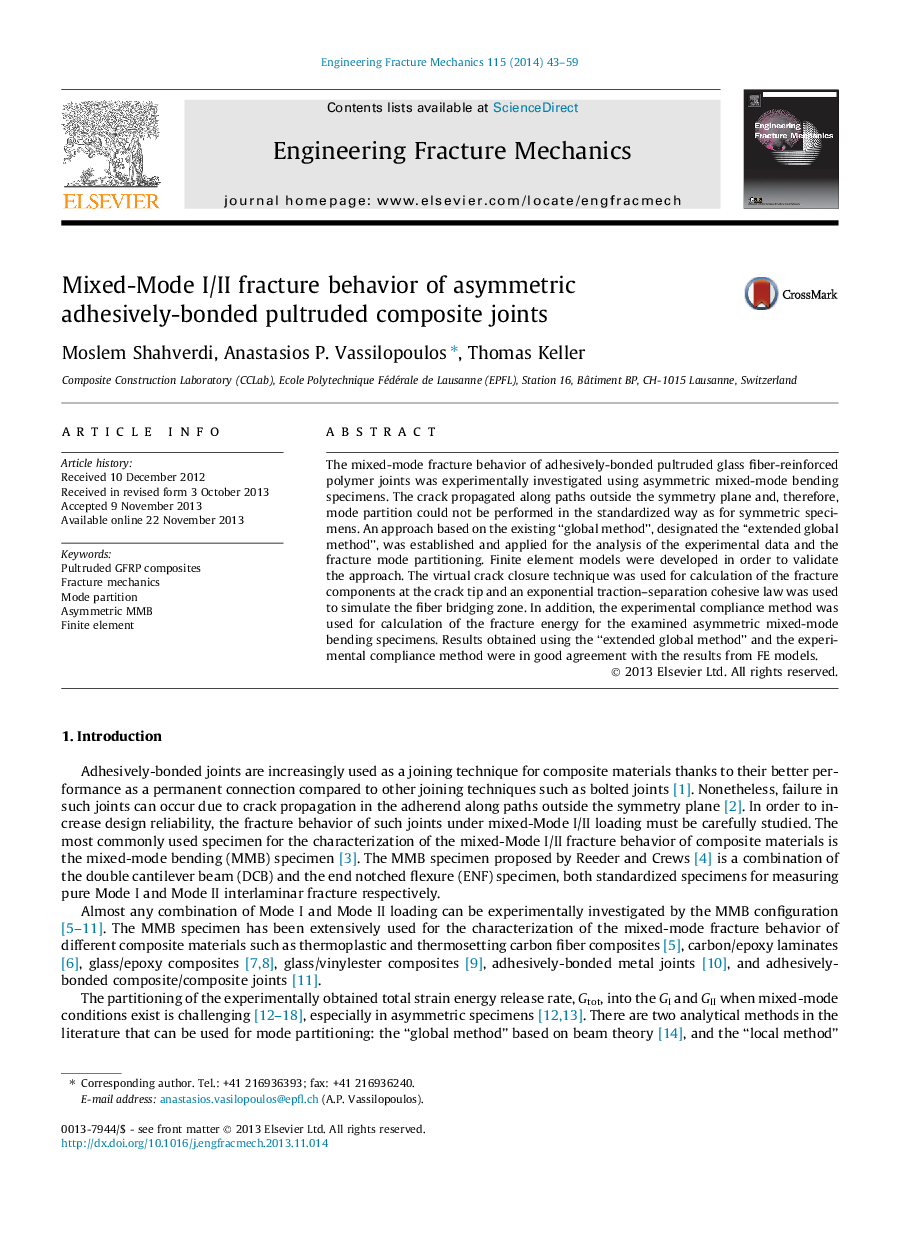| Article ID | Journal | Published Year | Pages | File Type |
|---|---|---|---|---|
| 767086 | Engineering Fracture Mechanics | 2014 | 17 Pages |
•The fracture of adhesively-bonded asymmetric MMB specimens was investigated.•FE models developed to calculate the Mode I and II fracture components.•The “extended global method” was introduced for the analysis of the experiments.•Zero-thickness cohesive elements were used to model the fiber bridging.•The partitioning of the Mode I and II fracture components was successfully performed.
The mixed-mode fracture behavior of adhesively-bonded pultruded glass fiber-reinforced polymer joints was experimentally investigated using asymmetric mixed-mode bending specimens. The crack propagated along paths outside the symmetry plane and, therefore, mode partition could not be performed in the standardized way as for symmetric specimens. An approach based on the existing “global method”, designated the “extended global method”, was established and applied for the analysis of the experimental data and the fracture mode partitioning. Finite element models were developed in order to validate the approach. The virtual crack closure technique was used for calculation of the fracture components at the crack tip and an exponential traction–separation cohesive law was used to simulate the fiber bridging zone. In addition, the experimental compliance method was used for calculation of the fracture energy for the examined asymmetric mixed-mode bending specimens. Results obtained using the “extended global method” and the experimental compliance method were in good agreement with the results from FE models.
